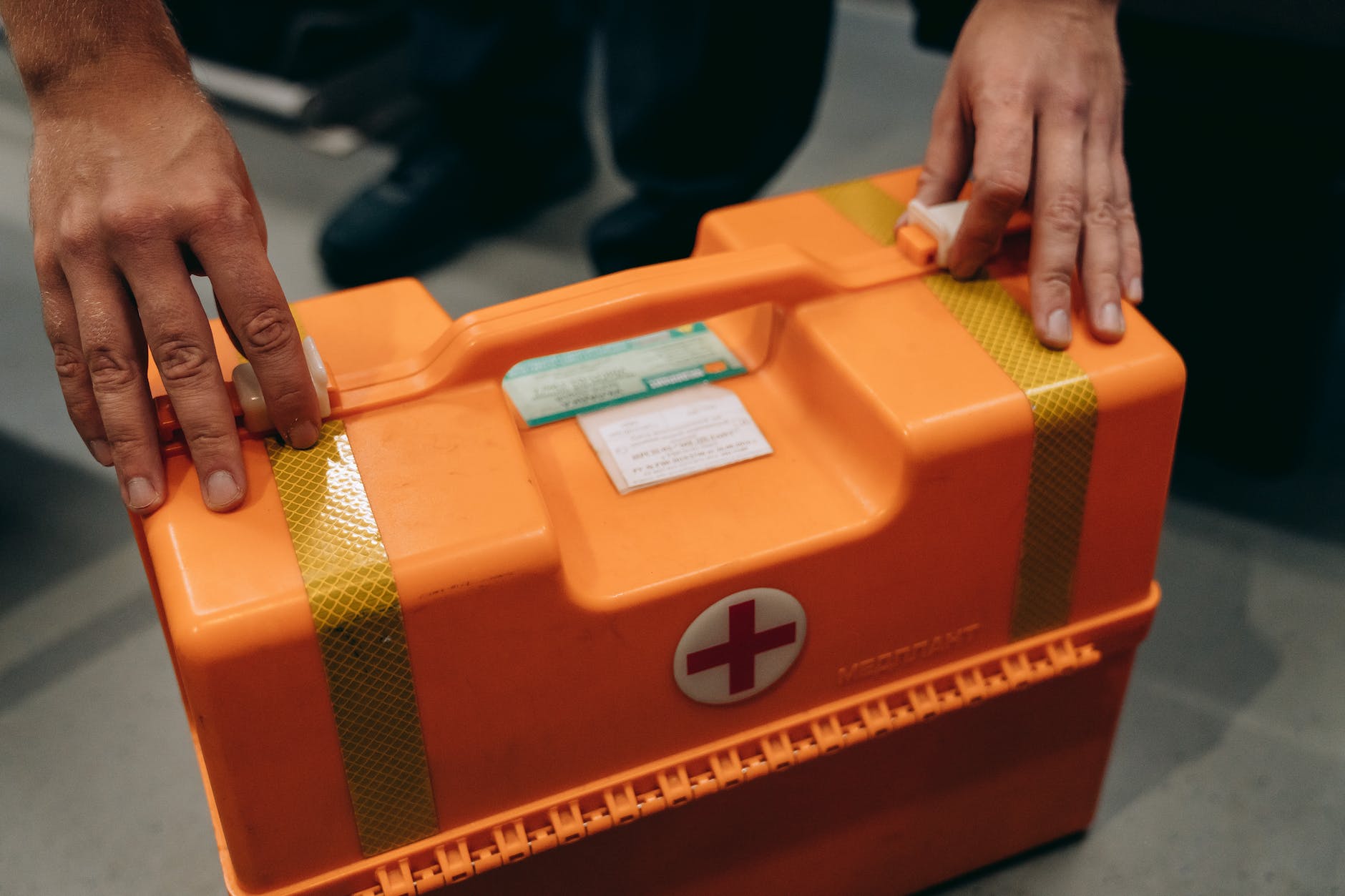
Introduction
In the vast expanse of wilderness, injuries can occur at any time, leaving individuals in remote areas vulnerable and in need of immediate medical attention. Whether it’s a sprained ankle on a hiking trail or a severe laceration during a camping trip, being equipped with the necessary knowledge and skills for wilderness first aid is essential for ensuring the well-being and safety of oneself and others.
Understanding the Importance of Wilderness First Aid
Wilderness first aid is a specialized form of medical care that is tailored to address injuries and illnesses that occur in remote and isolated areas. Unlike traditional first aid which takes place in urban or suburban environments with easy access to medical facilities, wilderness first aid requires individuals to rely on their own resourcefulness and limited supplies to provide appropriate medical assistance.
Why is Wilderness First Aid Important?
Wilderness first aid is vital because it bridges the gap between the occurrence of an injury or illness and the arrival of professional medical help. In remote areas, emergency medical services may be hours or even days away, making it crucial to have the knowledge and skills to stabilize and treat the injured or ill until help arrives. The key goal of wilderness first aid is to prevent the condition from worsening and to provide immediate care that can make a significant difference in the outcome of the situation.
Unique Challenges of Wilderness First Aid
Treating injuries and illnesses in remote areas presents unique challenges that are not typically encountered in urban settings. Some of these challenges include:
- Limited Resources: In the wilderness, medical supplies and equipment are limited, requiring individuals to be resourceful and adapt to their surroundings. Basic supplies such as bandages, splints, and medications must be carried in a compact and lightweight manner.
- Communication: Communication is often unreliable or non-existent in remote areas, making it difficult to seek medical advice or call for help. Wilderness first aid training emphasizes the importance of effective communication strategies such as using signaling devices and familiarizing oneself with emergency communication protocols.
- Environmental Factors: Wilderness environments can pose hazards such as extreme weather conditions, difficult terrain, and wildlife encounters. Wilderness first aid training equips individuals with the knowledge to assess and mitigate these environmental risks while providing medical care.
- Extended Timeframes: In remote areas, it may take a significant amount of time for medical help to arrive. Wilderness first aid training prepares individuals to provide care for extended periods, including managing pain, preventing infection, and minimizing complications that may arise.
The Role of Wilderness First Aid Certification
Obtaining wilderness first aid certification is highly recommended for individuals who frequently venture into remote areas or engage in outdoor activities. Certification courses provide comprehensive training on wilderness-specific medical techniques, emergency response protocols, and decision-making skills. Having a recognized certification not only enhances an individual’s knowledge and confidence but also ensures that they are well-prepared to handle emergencies in the wilderness.
In the next part of this article, we will delve into the essential skills and techniques taught in wilderness first aid courses, empowering individuals to respond effectively to injuries and illnesses in remote areas.
Wilderness First Aid Techniques and Procedures
In remote areas, access to medical help can be limited or non-existent, making it crucial for individuals to possess basic wilderness first aid skills. Knowing how to assess, stabilize, and treat injuries in the wilderness can make a significant difference in the outcome for the injured person. In this section, we will explore some essential wilderness first aid techniques and procedures.
Primary Assessment and Level of Consciousness
When encountering an injured person in a remote area, the first step is to perform a primary assessment to determine the severity of their condition. The primary assessment is a quick evaluation of the person’s level of consciousness, airway, breathing, and circulation (ABCs).
- Level of Consciousness: Check if the person is conscious, alert, and able to respond to questions. If they are unconscious, gently tap their shoulders and ask if they are okay. If there is no response, it may indicate a severe injury or medical condition.
- Airway: Ensure that the person’s airway is clear and unobstructed. If they are conscious and able to speak, their airway is likely open. However, if they are unconscious or having difficulty breathing, you may need to open their airway by tilting their head back and lifting their chin.
- Breathing: Observe the person’s breathing for any signs of distress, such as rapid or shallow breaths. If they are not breathing, initiate rescue breathing or CPR if you are trained to do so.
- Circulation: Check for a pulse at the carotid artery on the side of the neck. If there is no pulse, begin cardiopulmonary resuscitation (CPR) immediately.
Bleeding Control and Wound Care
In the wilderness, injuries that result in bleeding can become life-threatening if not properly managed. Here are some wilderness first aid techniques for controlling bleeding and caring for wounds:
- Direct Pressure: Apply direct pressure to the wound using a sterile dressing or cloth. Maintain pressure until the bleeding stops, and then secure the dressing with a bandage or tape.
- Elevation: If possible, elevate the injured body part above the level of the heart to help reduce blood flow to the area and minimize bleeding.
- Tourniquet: In extreme cases where direct pressure and elevation do not control severe bleeding, a tourniquet may be necessary. Use a wide and non-elastic band, such as a belt or a strip of fabric, and tie it tightly around the limb above the wound. Note the time the tourniquet was applied and communicate this information to medical professionals when help arrives.
- Cleaning and Dressing Wounds: Clean the wound with clean water or saline solution to remove dirt and debris. Apply an antibiotic ointment and cover the wound with a sterile dressing or bandage to prevent infection.
Fracture and Sprain Management
Fractures and sprains are common injuries in the wilderness, often resulting from falls or accidents. Proper management of these injuries can help reduce pain and prevent further damage. Here are some wilderness first aid techniques for managing fractures and sprains:
- Immobilization: Immobilize the injured limb or joint using splints or improvised materials like sticks, trekking poles, or clothing. Secure the splint above and below the injured area to prevent movement and minimize pain.
- Elevation: Elevate the injured limb to help reduce swelling and pain.
- Cold Compress: Apply a cold compress to the injured area to reduce swelling and alleviate pain. A makeshift cold compress can be created by wrapping ice or a cold pack in a cloth or towel.
- Pain Management: Provide over-the-counter pain medication, if available, to help manage pain. Follow the recommended dosage instructions.
By developing basic wilderness first aid skills, individuals can be better prepared to handle injuries in remote areas. Remember to stay calm, assess the situation, and provide care based on your level of training and available resources. In the next section, we will explore additional wilderness first aid techniques and procedures to further enhance your knowledge and preparedness.
Wilderness First Aid Techniques
In remote areas, access to medical help can be limited or nonexistent, making it crucial to have the necessary skills to provide first aid in the wilderness. This section will outline some essential techniques for treating common injuries and illnesses that may occur in remote areas.
CPR and AED
Cardiopulmonary resuscitation (CPR) is a life-saving technique that can be crucial in wilderness first aid situations. CPR is performed when someone’s breathing or heartbeat has stopped. By providing chest compressions and rescue breaths, you can help circulate oxygen in the person’s body until medical help arrives.
Additionally, many wilderness areas now have automated external defibrillators (AEDs) available. These devices can analyze a person’s heart rhythm and deliver a shock if necessary. Learning how to use these devices correctly can significantly increase the chances of survival in a cardiac emergency.
Splinting Fractures
Fractures can happen in the wilderness due to accidents or falls. Splinting is a technique used to immobilize and stabilize broken bones before transporting the patient. To splint a fracture, you’ll need to find suitable materials such as sticks, trekking poles, or even clothing. The idea is to create a rigid support that keeps the broken bone in place and prevents further damage.
When splinting a fracture, it’s important to assess the injured area carefully and ensure that the splint is not too tight, as this can affect blood circulation. Remember to immobilize both the joint above and below the fracture to minimize movement.
Treating Wounds
In the wilderness, even minor wounds can become infected if not properly treated. Here are a few essential steps to follow when treating wounds:
- Cleanse the wound: Use clean water or an antiseptic solution to rinse the wound thoroughly, removing any dirt or debris.
- Control bleeding: Apply direct pressure to the wound using a sterile dressing or clean cloth. Elevating the injured area can also help reduce blood flow.
- Apply an antibiotic ointment: Applying an antibiotic ointment to the wound can help prevent infection.
- Cover the wound: Use sterile gauze or adhesive bandages to cover the wound and protect it from further contamination.
Managing Hypothermia and Heat Exhaustion
In extreme weather conditions, such as cold or hot environments, it’s important to know how to manage hypothermia and heat exhaustion.
Hypothermia occurs when the body loses heat faster than it can produce it, leading to a dangerously low body temperature. If someone is showing signs of hypothermia, such as shivering, confusion, or loss of coordination, take immediate action to warm them up. This can be done by removing wet clothing, insulating them with blankets or sleeping bags, and providing warm liquids if possible.
Heat exhaustion, on the other hand, occurs when the body overheats due to excessive heat and dehydration. Symptoms include heavy sweating, weakness, dizziness, and nausea. To treat heat exhaustion, move the person to a cooler area, provide cold water or sports drinks, and help them cool down by applying cold towels or wet clothing to their body.
Conclusion
Wilderness first aid is an essential skill for anyone venturing into remote areas. By learning and practicing these techniques, you can be better prepared to handle medical emergencies and potentially save lives. Remember to stay calm, assess the situation, and provide the necessary care while waiting for professional medical help. Wilderness first aid training courses are available to further enhance your skills and knowledge in this important field.

Recent Comments